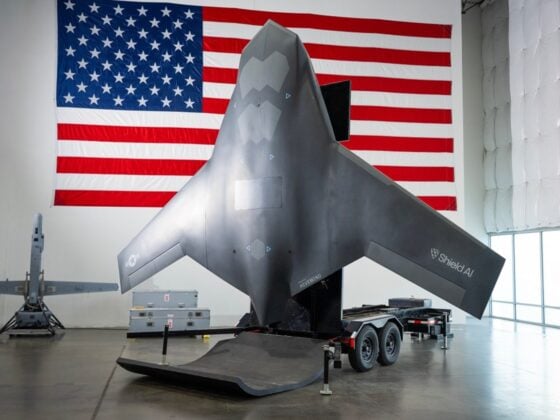
Shield AI, a defense technology company now valued at $5.3 billion, has announced the launch of the X-Bat, its first vertical takeoff and landing (VTOL) autonomous fighter jet designed for combat.
The company will unveil the new aircraft on Wednesday, positioning it as a central piece in the future of distributed airpower.
According to Shield AI, the X-Bat will operate without a human pilot and is intended to lead a networked fleet of unmanned systems. The company says the aircraft can launch and recover from ships, remote islands, or improvised forward operating locations—avoiding dependence on runways or conventional airbase infrastructure.
“This is the future of airpower,” the company said. Shield AI President and co-founder Brandon Tseng added, “AI-piloted and vertical takeoff launch and land have never come together in the form of a next generation aircraft.”
The aircraft combines full autonomy, VTOL capability, and long-range strike potential in a single platform. Shield AI said X-Bat can carry out air-to-air and air-to-surface missions and is equipped with an electronic warfare suite. The aircraft has a wingspan of 39 feet, a maximum range of over 2,000 nautical miles, and a service ceiling above 50,000 feet.
Shield AI says the jet can maneuver beyond 4 g and fits within a compact 40 ft x 14 ft x 6 ft storage footprint—underscoring its compatibility with expeditionary deployments. The platform can be armed with missiles and is designed specifically for combat operations, unlike the company’s earlier aircraft such as the V-Bat, which have been used primarily for surveillance and reconnaissance.
X-Bat is powered by Hivemind, Shield AI’s proprietary artificial intelligence pilot software that has already demonstrated its ability to fly complex aircraft such as the F-16 autonomously. The company says this software allows aircraft to make decisions and operate independently in GPS- and communications-denied environments.
Company officials also pointed to the X-Bat’s cost profile as a breakthrough. Shield AI says it is on track to produce the aircraft for roughly $27 million—far below the production cost of traditional manned fighters like the F-35, which can exceed $100 million per unit. The lower cost could allow the Pentagon and partner forces to field more airframes across contested theaters without increasing risk to pilots.
In a statement, co-founder and CEO Ryan Tseng said, “We fundamentally believe we can save service members’ lives by reducing the risk that you have of putting people in danger.”
The aircraft is expected to serve at the tactical edge in contested environments, allowing rapid response and persistent air presence without the logistical demands of traditional aviation assets. Shield AI describes X-Bat as “the leading edge of a distributed, unmanned fires network.”
Founded in 2015, Shield AI has grown into a major player in U.S. defense contracting. In 2024, it secured a nearly $200 million contract with the U.S. Coast Guard to supply its V-Bat drone. The company’s expansion into armed, autonomous combat aircraft signals a shift in how it aims to support future operations across multiple services.
Shield AI says the X-Bat’s deployment could redefine how the U.S. military and its allies project power, particularly in areas where conventional basing is vulnerable or unavailable.